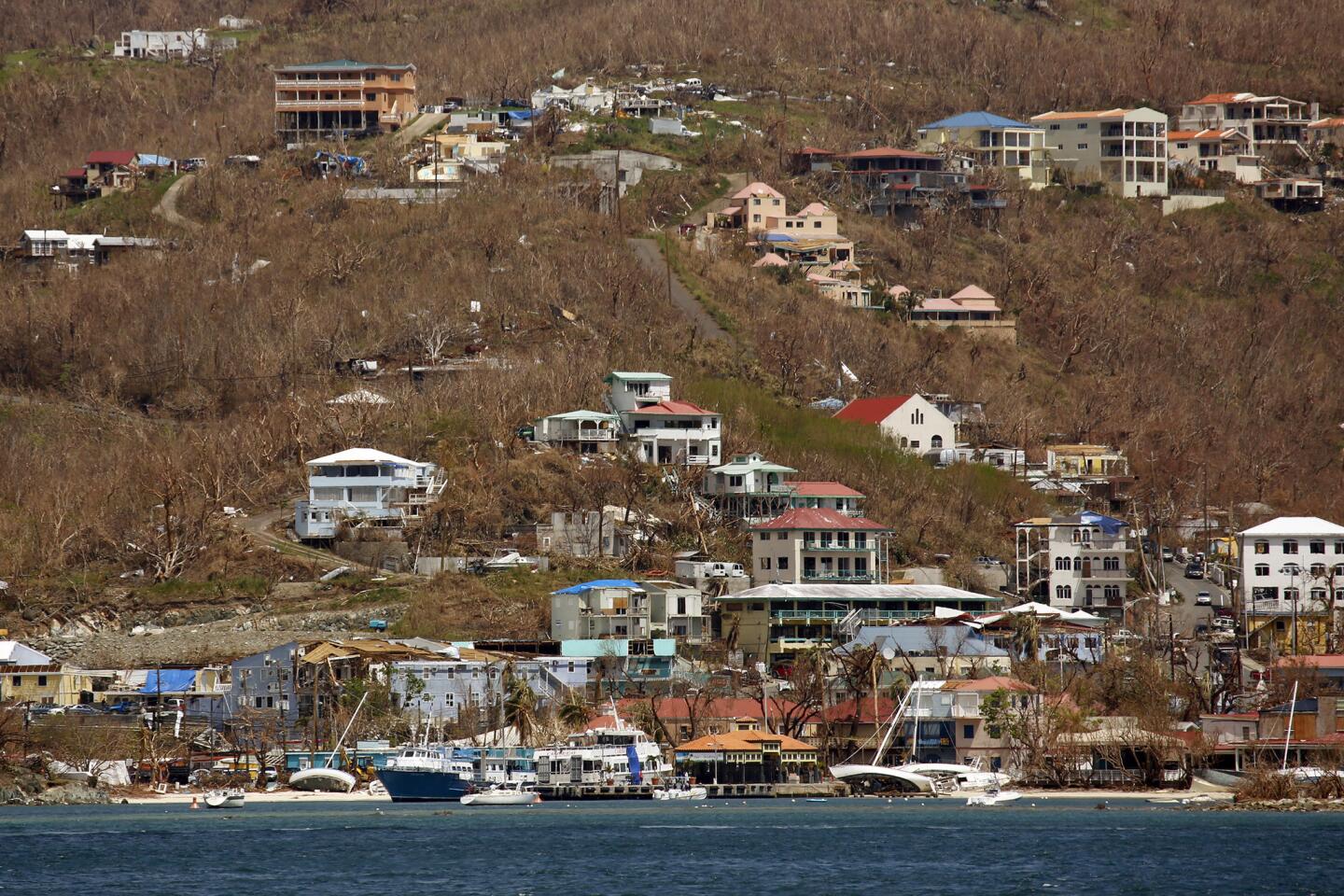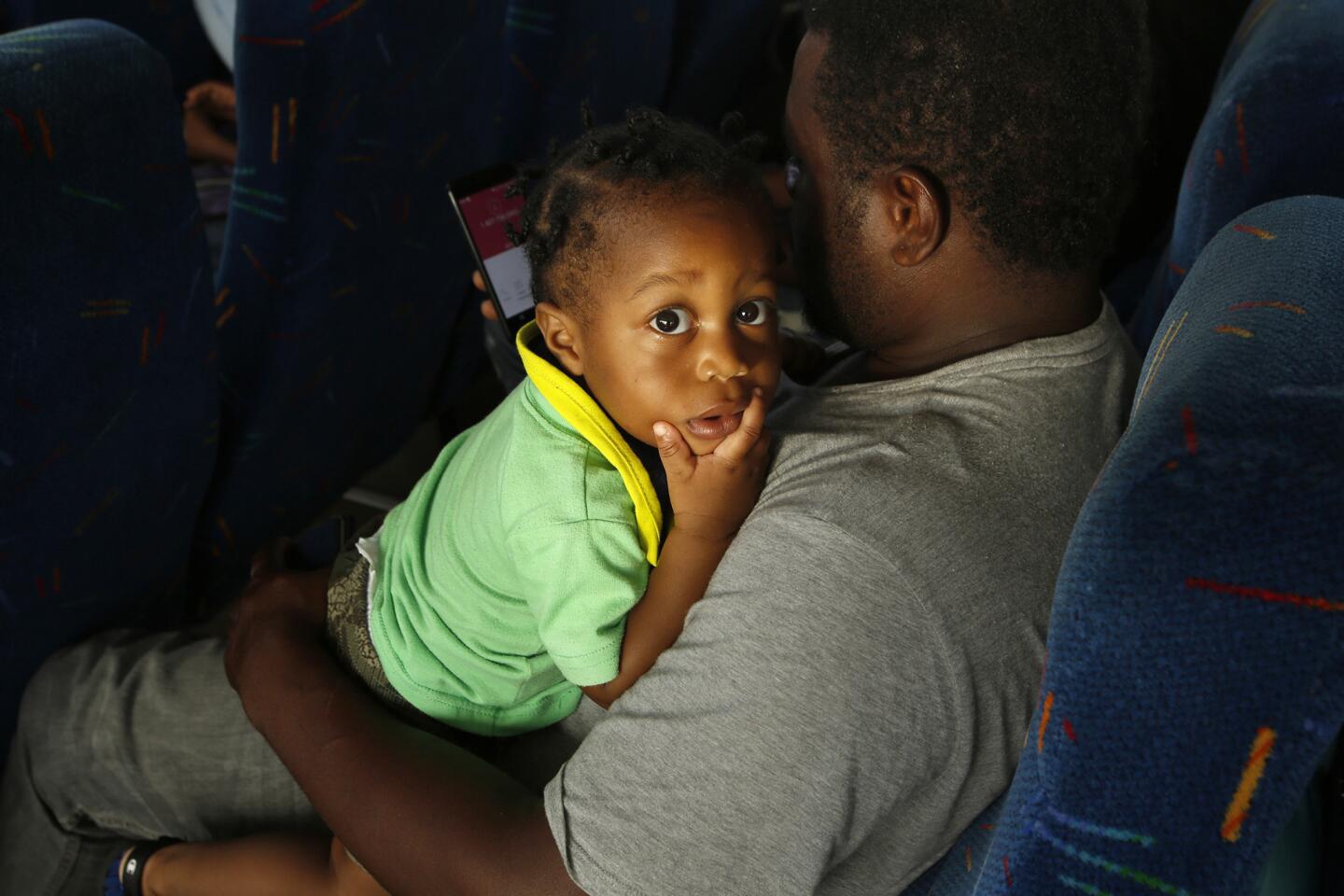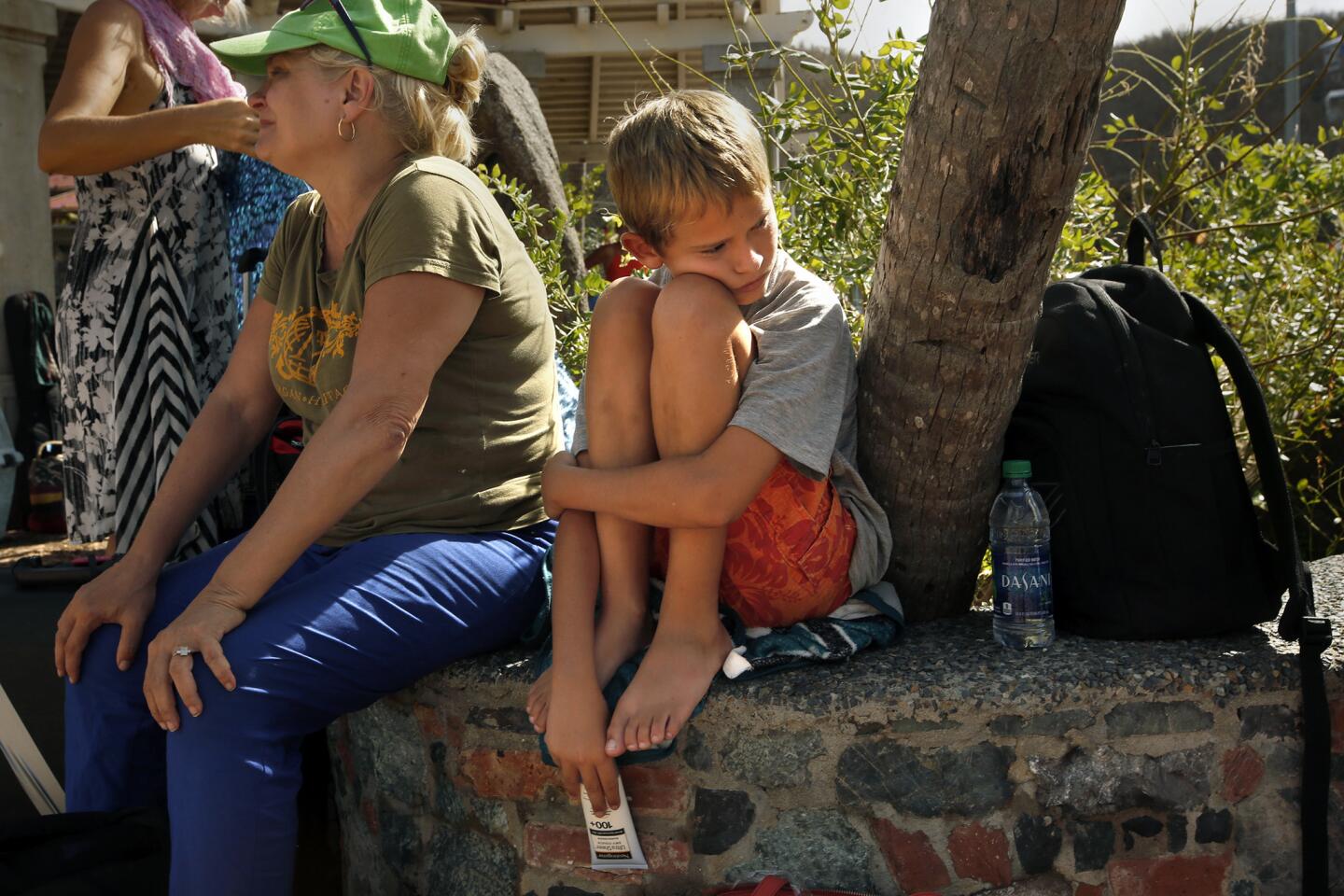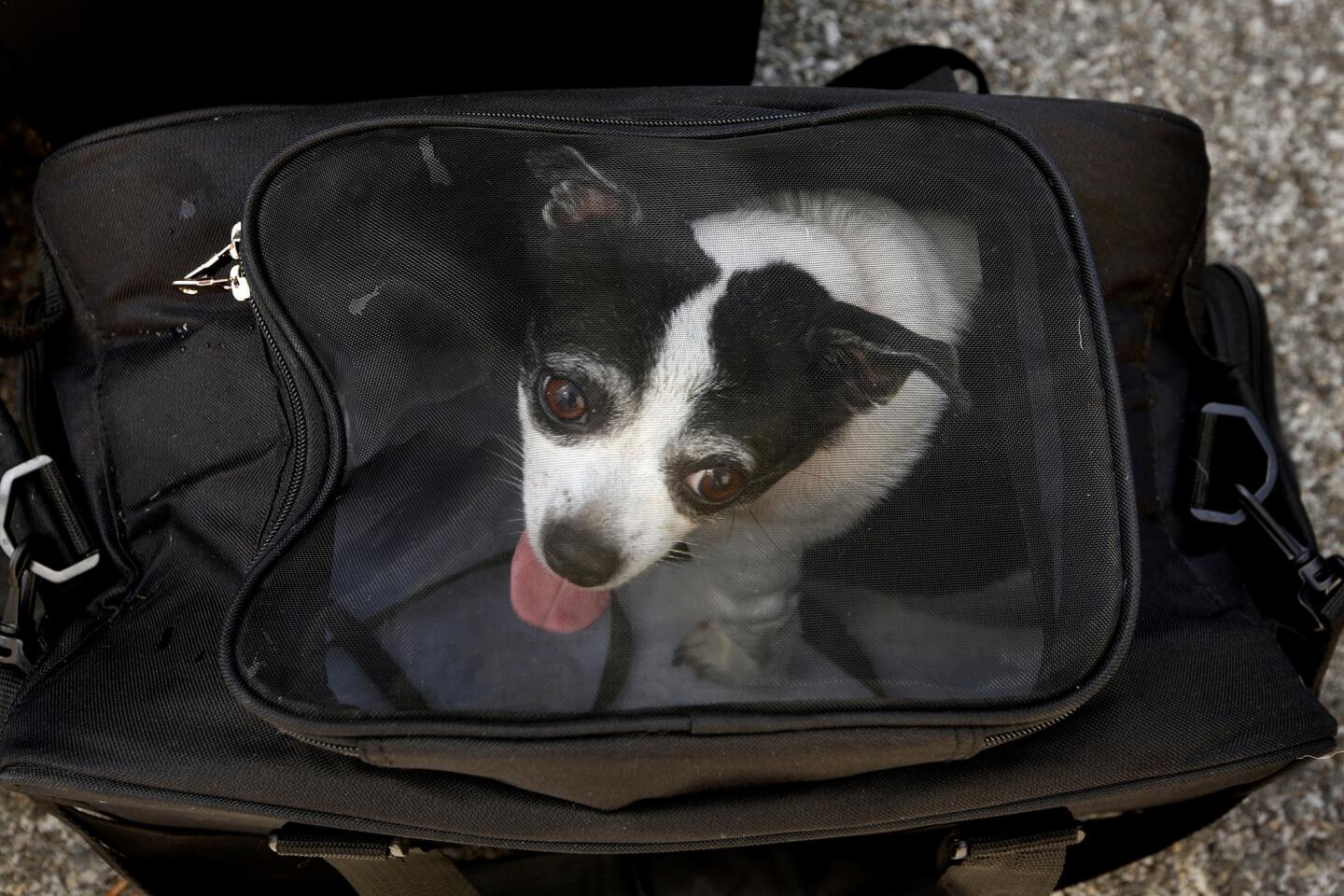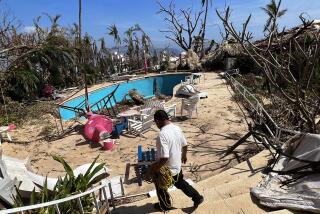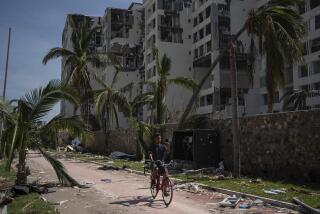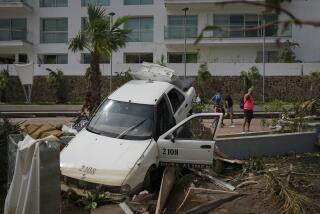Still reeling from Irma, U.S. Virgin Islanders scramble to evacuate ahead of another hurricane

Virgin Islands residents, still reeling from Irma, evacuate as new storms approach (Video by Carolyn Cole / Los Angeles Times)
At the docks of this Caribbean outpost, families with dogs and cats in carriers waited under a blazing tropical sun beside the wrecks of pleasure boats tossed ashore by Hurricane Irma.
Another hurricane, Maria, was on the way, and could hit the already ravaged island of St. John and surrounding Leeward Islands as soon as Monday. Nearby airports had closed. Ferries to the island of St. Croix were suspended. Even soldiers deployed to aid with the recovery efforts had withdrawn.
Two emergency ferries leaving Sunday for San Juan, Puerto Rico, might be the last chance to evacuate before the storm.
Nearly 200 people signed up for the free trips, and dozens more arrived at dawn to add their names to the list. They had been living for more than a week without steady cellphone service, electricity or running water.
Most were headed to the United States — to California, Colorado, Delaware, Florida, Georgia, North Carolina and Pennsylvania — some for the second time in as many weeks.
Carrie Lamar, 49, and her husband were the first in line with their two dogs. Originally from Hermosa Beach, Lamar made St. John — the smallest of the U.S. Virgin Islands — her home and stayed on even after it took three days to dig out from under Irma’s debris. She was sunburned, tired and soon began to cry.
“I don’t think I can leave,” she said. “We don’t know where we will go from here. We don’t know when we will be able to come back. We don’t know if we should put ourselves and the dogs through this.”
She checked on Momo, the couple’s pug-poodle, and Bella, their German shepherd mix. When the time came, she loaded them onto the ferry.
Eric Woltkamp, 36, and his husband boarded with their two 2-month-old Jack Russell terrier, Indy. He feared that Maria would follow the same path as Irma, battering St. John’s vulnerable hills, stripped of the tropical canopy that anchors the earth and protects against landslides.
“I’m just so afraid,” he said. “All this loose debris is going to become missiles.”
Nancy Batten was the last to arrive, carrying her 2-year-old son, Wiley, the reason she was leaving. Her husband was staying to fix their damaged home.
The first ferry left shortly after 10:30 a.m. with space for just 50 passengers. The rest would have to wait for another boat, which disaster managers said would arrive soon. Some returned home. Others took off to make alternative plans. More than 100 decided to wait.
Some sat on the grass and opened laptops to book hotel rooms in San Juan. Others worried about finding a flight out of the Puerto Rican capital. Prices to the U.S. had soared, and Hurricane Maria was on track to hit that island too. What if the storm followed them there?
Isabelle Turner, 53, who moved from San Francisco to St. John with her husband years ago, called her daughter and instructed her to book them a flight to anywhere.
“We just don’t know what direction to go,” Turner said. “I don’t know anyone in Puerto Rico. If it hits there, I’m in a worse position than I am here.”
The couple’s house was destroyed by Irma, and they had already evacuated to a nearby friend’s place. They also lost both their cats.
Minette, 18, was too old to travel and had to be put down. Moona, a hardy, outdoor “island cat,” disappeared after the hurricane. She was there when Turner returned to check on the remains of their house, but the reunion was short-lived.
“She purred, and then she ran away,” Turner said. “That was her goodbye.”
Nina Gross, 72, moved to St. John with her husband 46 years ago. She persuaded her daughter’s family to join them, then lost everything to Irma — “a lifetime of labor and love.”
“We’re not going to rebuild,” she said, as she waited for the afternoon ferry, the line a reminder of how exponentially the population had grown since she arrived on the island.
A second ferry pulled into the harbor shortly before 2 p.m., with room for the remaining 105 evacuees to take the roughly two-hour ride.
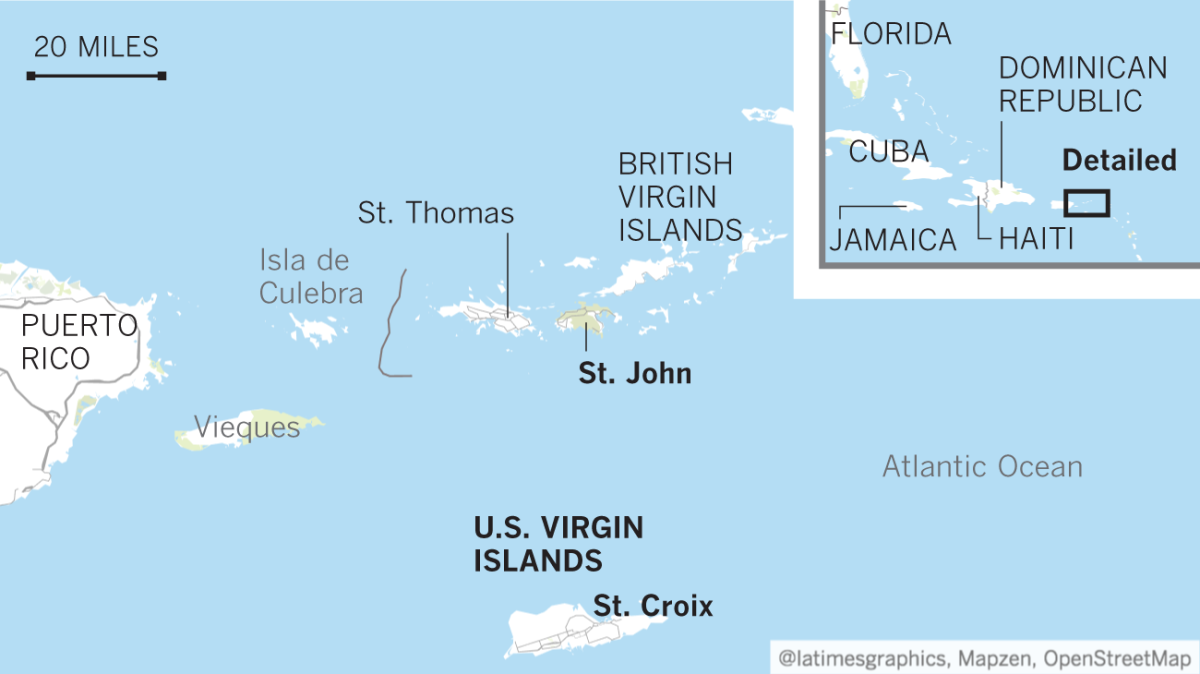
For Tracy Thompson, a 44-year-old preschool teacher, boarding the ferry with 6-year-old son Noah Samuel was initially a relief. They lost their roof and their school to the storm. The last week and a half was a blur. Now they were headed to stay with family in Atlanta.
Her son was busy playing with her phone, excited about the prospect of Wi-Fi. But as Thompson watched the aquamarine shoreline recede, below brown hillsides shorn of leaves, she felt more alone than she had since Irma struck.
After the storm, she was united with her neighbors in a struggle to survive. But she was leaving them and her home of 14 years behind. She wasn’t even sure if she could find a place to stay in Puerto Rico for the night.
“I felt great after Irma, watching everybody coming together. But to see people having to go…” she said, her voice breaking.
“But it’s not just us. Other people have been through this: Harvey, Texas just went through this,” she continued. “I take comfort in the fact that everybody just keeps moving, keeps working. And St. John will be OK.”
molly.hennessy-fiske@latimes.com
Twitter: @mollyhf
More to Read
Start your day right
Sign up for Essential California for news, features and recommendations from the L.A. Times and beyond in your inbox six days a week.
You may occasionally receive promotional content from the Los Angeles Times.


